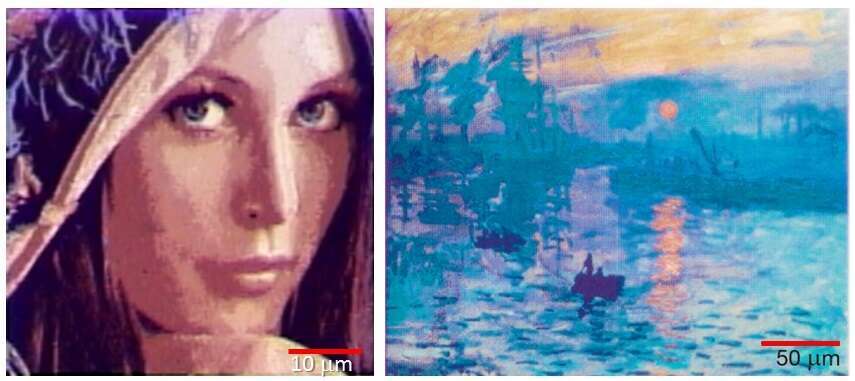
Invited Paper
Application of Nanoplasmonics in Color Printing
We engineer metal nanostructures to scatter off different colors by tuning their size and arrangements. This phenomenon can be used to create high-resolution color prints. While the resolution of ink-based color printers is limited to ~1,000 dots-per-inch (dpi), nanostructured metal can achieve prints at ~100,000 dpi[1]. At this resolution, different color pixels ~ 250 nm in size can be juxtaposed without placement errors, and color prints can be achieved at the optical diffraction limit.
Though plasmonic color filters have been previously demonstrated, the colors transmitted strongly depend on the periodicity of the grating or nanohole array. We recently showed that single nanostructures with a backreflector design can support colors in reflection mode, without relying on diffractive effects. This effect enables a cluster of nanostructures to be combined or mixed at sub-diffraction dimensions to generate a broad color gamut. Further modification to the geometry of the structures introduces polarization effects, which allows a single structure to produce multiple colors.
Structures were created by electron-beam lithography of hydrogen silsesquioxane resist do define nanoposts of diameters as small as 40 nm, and varying pitch between 80 to 400 nm. Metal nanoresonators were created by electron-beam evaporation to form disks on the nanoposts and a backreflector coating in between the posts. The colors achieved after metal deposition can be readily observed in a bright-field optical microscope, as shown in Figure 1.
We will present the recent progress in plasmonic color printing in metals such as silver, gold, and aluminum,[2],[3] and discuss potential applications and challenges in achieving high-volume and large-scale color prints.
[1] Kumar, K. et al. Printing colour at the optical diffraction limit. Nat. Nanotechnol. 7, 557–61 (2012).
[2] Tan, S. J. et al. Plasmonic color palettes for photorealistic printing with aluminum nanostructures. Nano Lett. 14, 4023–9 (2014).
[3] Goh, X. M. et al. Three-dimensional plasmonic stereoscopic prints in full colour. Nat. Commun. 5, 5361 (2014).

Powered by Eventact EMS